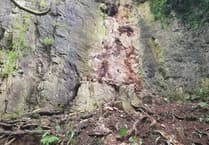PLANS for a solar farm near Hartpury have been rejected on appeal because of concerns about its impact on the landscape and wildlife.
Among the concerns about the effects of the Elgin Energy plan near Murrells End Farm was that on endangered skylarks.
But the planning inspector who heard the appeal rejected claims that giving the go-ahead would, along with other built or planned solar farms, have contributed to the area becoming 'Solarshire”.
The proposal was solar panels mounted on fixed frames, 24 inverter stations, a substation compound, deer fencing, security cameras, internal access track, a temporary construction compound and landscaping.
The completed facility would have had a lifespan of 40 years and would supply electricity for the equivalent of 14,000 homes.
The site was around 73 hectares (180 acres) of largely agricultural fields. Four other nearby sites were considered but were rejected as unsuitable.
The appeal was seeking to overturn the Forest Council's refusal of planning permission for the scheme.
The main issues were: the characte and appearance of the area, the impact on the living conditions of people living nearby, the use of “best and most versatile agricultural landscapes and the effect on protected species – particularly skylarks.
Planning inspector Rosalyn Kirby concluded: “In my judgement the proposal would cause varying degrees of harm to the character and appearance of the area, with the greatest harm caused close to the site, reducing with distance and over time as landscaping matures.”
But she added over the lifetime of the development, the harm that would be caused could be controlled by planning conditions.
She also said: “The proposal in combination with other approved, implemented and unimplemented schemes would not convey the impression of ‘Solarshire’ as suggested at the Hearing.”
The solar farm would be visible from homes in Rudford but Ms Kirby said the distance and existing and proposed landscaping would ensure that there would be no harm to the occupiers’ living conditions.
While the land would be taken out of production for a long period, as long as it was suitably managed it would not be “lost” as farmland, said the inspector.
The company had set out how the panels, cables, fencing and equipment woujld be installed and a soil management plan could control construction and decommissioning to ensure there was no damage to the soil, she added.
The inspector said she was satisfied the proposal would not affect the use of the land for agriculture.
She also found the impact on nearby historic buildings would be “less than substantial”.
The company's own Ecological Assessment found the proposal would present “particularly high risks” for ground-nesting birds such as skylarks and the inspector found that the proposed solutions may not be sufficient.
“Whilst I am satisfied that the proposal would preserve and enhance biodiversity in terms of the protected species, at this stage there is no certainty that the harmful effect of the proposal on skylark territories could be suitably mitigated.
“Given the rarity of this species and it being included on the BoCC (Birds of Conservation Concern) red list and my statutory duty, the significant benefits of the proposal do not outweigh the harm that would be caused to this protected species, and the conflict with the development plan in this regard.
The new landscaping and meadow planting proposed would result in significant biodiversity net gain, a matter which weighs in favour of the proposal, the inspector found.
“Whilst significant weight is given to the provision of a renewable energy scheme along with the benefits, they do not individually or cumulatively outweigh the identified harms or the conflict with the development plan taken as a whole.”




